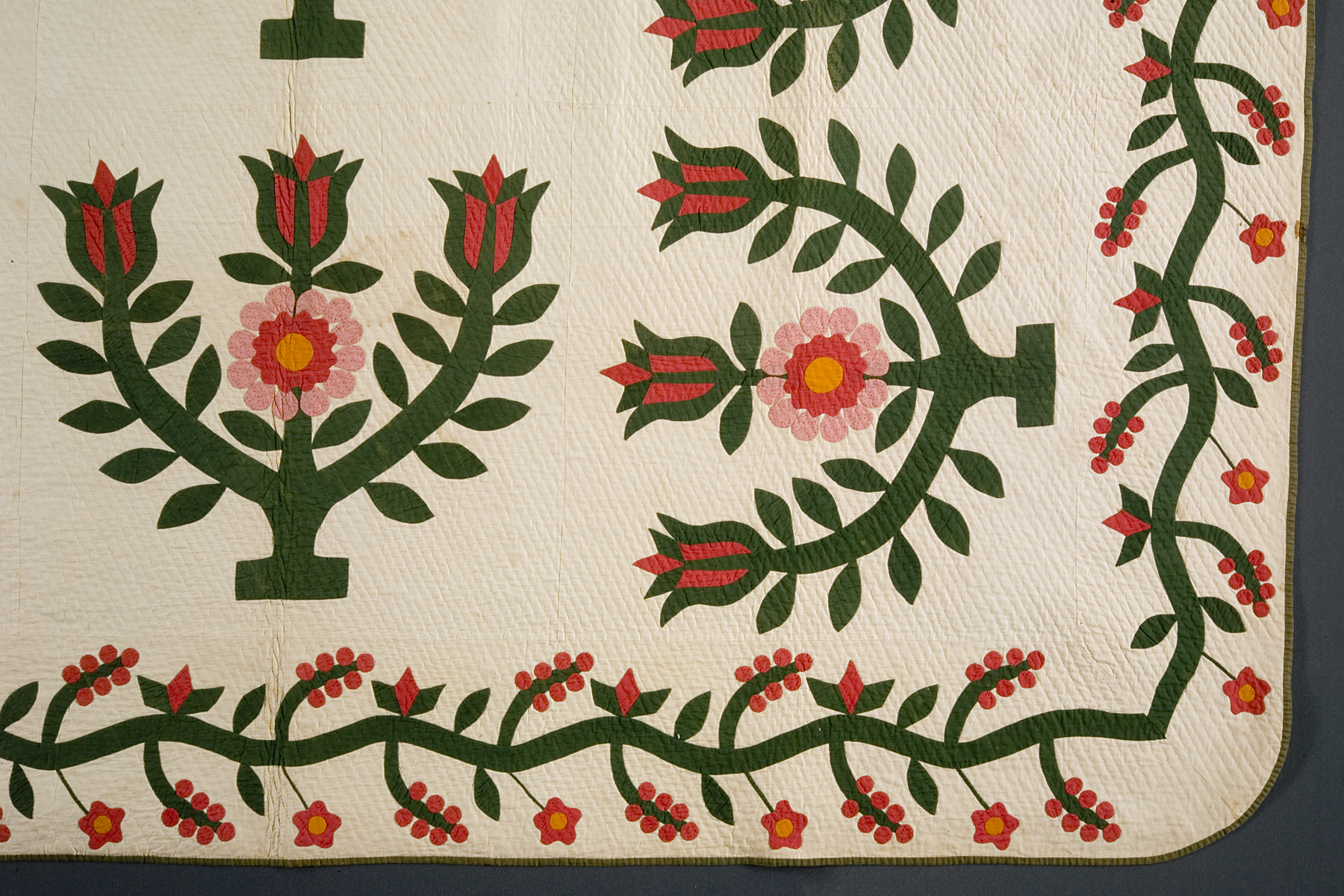Tulip Tree quilt, Clarenca Bradford Kimble
Artwork Overview
Clarenca Bradford Kimble, artist
Tulip Tree quilt,
circa 1850–1880
Where object was made: United States
Material/technique: cotton; quilting; appliqué
Credit line: Source unknown
Accession number: 0000.0678
Not on display
If you wish to reproduce this image, please submit an image request










